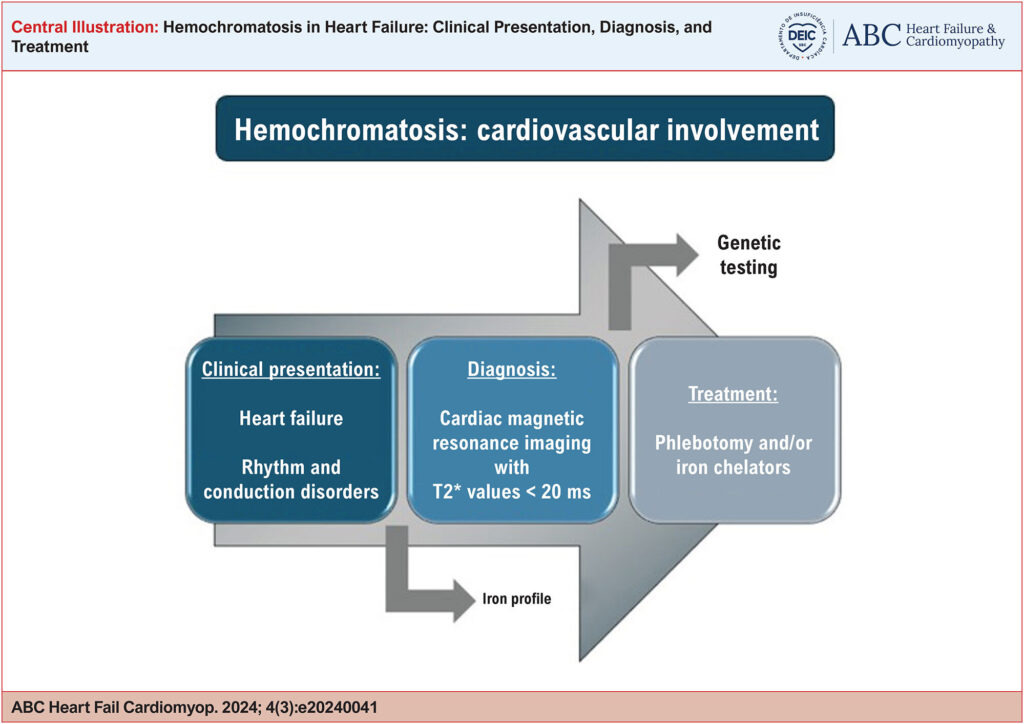ABC Heart Fail Cardiomyop 2024; 4(3): e20240041
Hemochromatosis in Heart Failure: Clinical Presentation, Diagnosis, and Treatment
Introduction
Hemochromatosis is a disease characterized by excessive intestinal absorption of iron and its deposition in various organs, including the heart. There are 2 types of hemochromatosis: primary and secondary. Primary or hereditary hemochromatosis (HH) is a genetic disease, whereas secondary hemochromatosis is a consequence of systemic diseases, such as anemia, thalassemia, liver disease, or excessive blood transfusions.
It was first described in the nineteenth century by the French physician Armand Trousseau, who raised the hypothesis that some excess element in the blood was responsible for causing organ damage and skin pigmentation. In 1935, Joseph Sheldon identified that iron accumulation in tissues was responsible for toxicity and was the first to suggest that this metabolic defect had a genetic origin. In the 1950s, a study of iron kinetics correlated increased intestinal iron absorption in patients with hemochromatosis. It was only in 1996 that the “hemochromatosis gene,” HFE (“high Fe”), which is responsible for most cases of the disease, was identified.
[…]
Keywords: Cardiomyopathy; Heart Failure; Hemochromatosis
684


